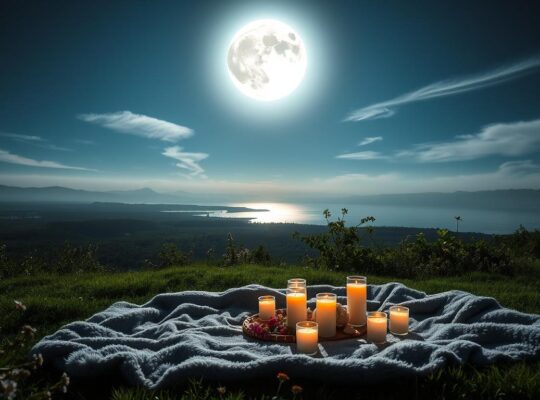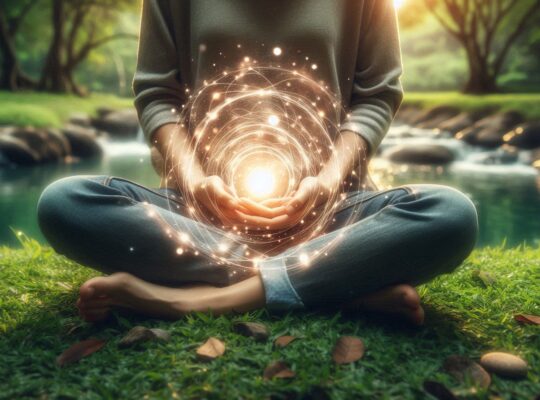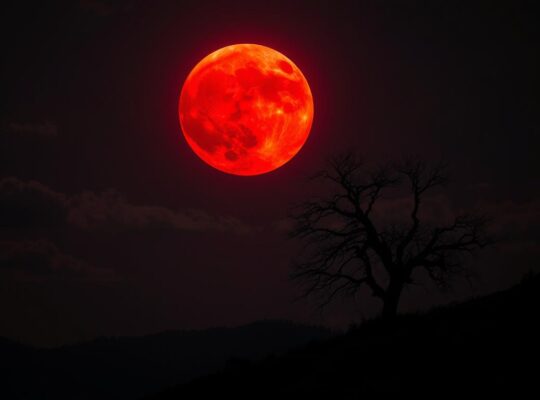I’m here sitting on my cozy deck, surrounded by the gentle glow of candlelight, my trusty cat – Meowdred the Magnificent – purring softly nearby, sipping my chamomile tea (with a dash of magic, of course), I can’t help but reflect on the incredible diversity within our witchy community.
You know, it wasn’t too long ago that I was a wide-eyed newcomer, overwhelmed by the vast tapestry of magical practices out there. Now, after years of exploration and more than a few mishaps (remind me to tell you about the time I accidentally turned my hair blue during a moon ritual), I’m excited to share what I’ve learned about the many flavors of witchcraft.
So, whether you’re just dipping your toes into the magical waters or you’re a seasoned spellcaster, grab your favorite mug, get comfy, and let’s embark on this enchanting journey together. Trust me, by the end of this, you’ll see that there’s no one-size-fits-all in witchcraft – and that’s precisely what makes it so beautiful.
Introduction to Witchcraft: Dispelling Myths and Embracing Diversity
Let’s start by clearing the air, shall we? Witchcraft isn’t about riding broomsticks or turning people into frogs (though that would be pretty cool, right?). It’s a rich, diverse practice that’s as varied as the witches who follow it.
Contrary to popular belief, witchcraft isn’t inherently good or evil – it’s a neutral force that can be used for various purposes, depending on the practitioner’s intentions. Think of it as a tool, like a kitchen knife. You can use it to prepare a delicious meal or… well, let’s not go there!
Understanding the different types of witches is crucial because it helps us appreciate the breadth and depth of magical practices. It’s like exploring a vast, mystical forest – each path leads to unique discoveries and insights.
Historical Witches: Tracing the Roots of Witchcraft
Before we delve into modern witch types, let’s take a quick trip down memory lane. Witchcraft has been around for centuries, evolving and adapting along the way.
In ancient times, witches were often respected members of their communities, serving as healers, midwives, and spiritual guides. These wise women and cunning folk used their knowledge of herbs, natural cycles, and folk magic to help others.
Unfortunately, the witch trials of the 16th and 17th centuries cast a dark shadow over witchcraft. This period of persecution led to widespread fear and misunderstanding, effects of which we’re still working to overcome today. To learn more check out my blog “The History of Witches: From Ancient Times to Modern Day”.
The Wiccan Tradition: An Introduction to Modern Witchcraft
Fast forward to the mid-20th century, and we see the birth of Wicca, a modern pagan religion that incorporates witchcraft practices. Wiccan witches follow a nature-based spirituality, often worshipping a God and Goddess and celebrating the cycles of the seasons.
Wiccans can practice solo (solitary witches) or in groups (covens). They follow the Wiccan Rede, an ethical guideline that states, “An it harm none, do what ye will.” They also believe in the Rule of Three, which suggests that whatever energy a witch puts out into the world will return to them threefold.
Eclectic Witches: Embracing Personalized Paths
Now, let’s talk about one of the most flexible and individualistic types of witches – the eclectic witch. These magical practitioners are the ultimate spiritual DIY-ers, blending elements from various traditions to create a practice that resonates with them personally.
Eclectic witches might incorporate Wiccan rituals, Buddhist meditation techniques, and Native American smudging practices all in one spell! They rely heavily on personal intuition and research, creating a magical practice that’s as unique as they are.
If you’re drawn to multiple traditions and love the idea of crafting your own magical path, eclectic witchcraft might be your jam!
Hereditary Witches: The Role of Lineage and Tradition
Hereditary witches are those who inherit their magical practices from family members. These witches often have access to generations of magical knowledge, passed down through grimoires, oral traditions, or practical teachings.
While hereditary witchcraft can provide a strong foundation and connection to one’s ancestors, it’s important to note that magical ability isn’t exclusive to those with witchy lineages. Many argue that all humans have the potential for magic, regardless of their family background.
Cosmopolitan Witches: Modernity and Urban Witchcraft
In our increasingly urbanized world, a new breed of witch has emerged – the cosmopolitan or urban witch. These magical practitioners have adapted traditional witchcraft to fit modern city life.
Urban witches might use technology in their spellwork, like creating digital altars or using apps to track moon phases. They’re masters at finding magic in the concrete jungle, working with the energy of skyscrapers or incorporating city sounds into their rituals.
Green Witches: Nature’s Magical Allies
Green witches are all about that plant life! These nature-loving practitioners work closely with herbs, trees, and the spirits of the land. They’re often skilled herbalists and gardeners, infusing their magical practice with a deep connection to the natural world.
Green witches might create their own magical tools from natural materials, perform rituals outdoors, and have an uncanny knack for plant communication. If you’ve got a green thumb and feel most at peace in nature, green witchcraft could be your calling!
Click here to download your FREE “Herbal Healing Guide for Witches”
Kitchen Witches: Stirring Up Some Magic
Who says magic can’t happen in the kitchen? Kitchen witches infuse their culinary creations with magical intent, turning everyday cooking into powerful spellwork. They might bake protection into bread, stir love into soup, or brew up magical teas.
Kitchen witchcraft is a beautiful blend of practical skills and magical practice. It’s perfect for those who love to nurture others through food and find joy in the simple magic of everyday life.
Elemental Witches: Harnessing the Power of Nature
Elemental witches focus their practice on the four classical elements: Earth, Air, Fire, and Water. Each elemental witch type has its own unique characteristics:
- Earth Witches: Connected to the physical world, they work with crystals, plants, and grounding energies.
- Air Witches: Focused on mental energies, communication, and the power of the wind.
- Fire Witches: Passionate and transformative, they work with candle magic and the energy of change.
- Water Witches: Intuitive and emotional, they’re often drawn to moon magic and the ebb and flow of tides.
Some witches might feel a strong connection to one element, while others work with all four to maintain balance in their practice.
Other Witch Types: A Magical Spectrum
The world of witchcraft is vast, and there are many more types of witches than we can cover in one article. Here are a few more to explore:
- Divination Witches: Specialists in tarot, runes, scrying, and other forms of fortune-telling.
- Cosmic Witches: Those who work closely with astrology and celestial energies.
- Tech Witches: Modern practitioners who incorporate technology into their spellwork.
- Hedge Witches: Spiritual travelers who work between the physical and spiritual realms.
Remember, these categories often overlap, and many witches incorporate elements from multiple types into their practice.
Embracing the Diversity of Witchcraft
As we’ve seen, the world of witchcraft is incredibly diverse. From traditional Wiccans to modern urban witches, there’s a magical path for everyone. And here’s the most important part: it’s absolutely okay not to fit neatly into any one category!
In fact, I personally identify as a solitary and eclectic witch. I don’t feel that I fit perfectly into any single type, so I take a little from each to create my own unique practice. And guess what? That’s perfectly fine!
The beauty of witchcraft lies in its flexibility and personal nature. Your magical journey is uniquely yours, and it’s okay to explore different paths until you find what resonates with you. Mix and match, experiment, and create a practice that feels authentic to you.
Whether you’re casting spells in a high-rise apartment, communing with nature in a forest grove, or blending practices from various traditions, remember that the most powerful magic comes from within. Trust your intuition, respect the practices of others, and never stop learning!
Remember, the magical path you choose should feel right for you. Don’t be afraid to experiment, learn, and grow. After all, that’s what witchcraft is all about! It’s perfectly okay to be a blend of different types or to create your own unique magical identity.
Blessed be, magical friends! 🌙✨

FAQs
Q: Can I be more than one type of witch?
A: Absolutely! Many witches incorporate elements from various traditions into their practice. It’s common and encouraged to explore different types.
Q: Do I need special powers to be a witch?
A: Nope! Witchcraft is a practice that anyone can learn with dedication and study. It’s about developing skills, not innate supernatural abilities.
Q: Is witchcraft the same as Wicca?
A: While Wicca incorporates witchcraft, not all witches are Wiccan. Witchcraft can be practiced independently of any religious beliefs.
Q: Can men be witches?
A: Definitely! Witchcraft is not gender-specific. Anyone can be a witch, regardless of gender identity.
Q: Do I need to buy lots of tools to practice witchcraft?
A: While tools can be helpful, the most important ingredient in any spell is your intention. Many witches work with simple, everyday objects.






